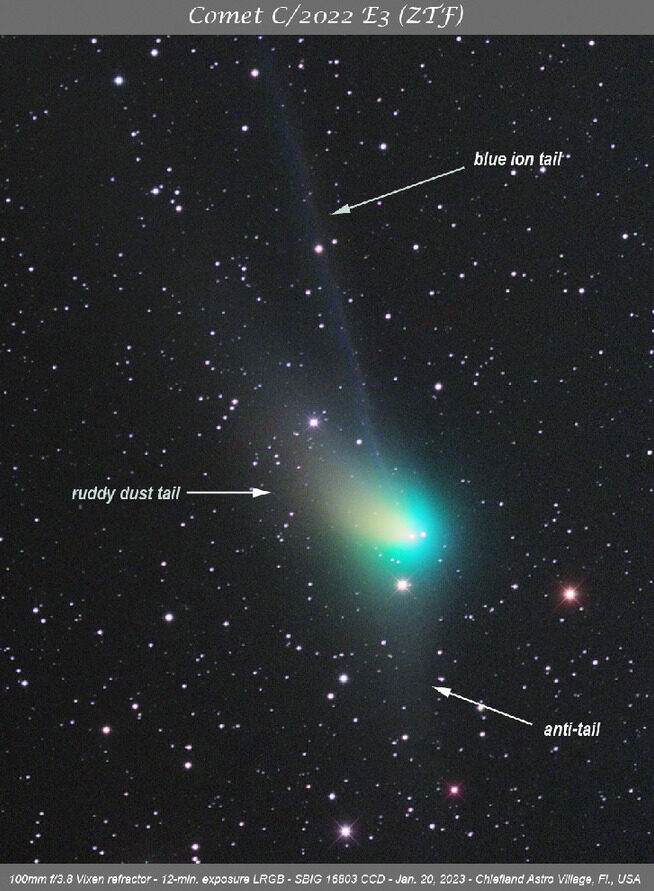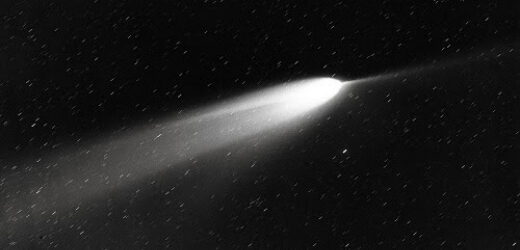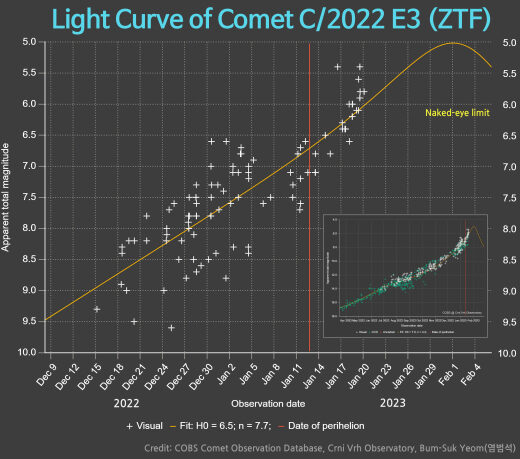
Taken by Bill Williams on January 20, 2023 @ Chiefland Astro Village, Florida, USA
"Comet ZTF has developed an anti-tail in addition to its dust and ion tails!" says Williams. "Just how many tails can a comet have?"
Briefly, three. Comets sometimes grow an ephemeral third tail, the "anti-tail." It's an optical illusion seen when Earth crosses a comet's orbital plane. At that moment, the edge of the comet's fan-shaped dust tail looks like an sunward pointing spike.
"It's happening tonight," says longtime comet observer Paul Robinson of Longmont, CO. "On the evening of Jan. 22nd in the Americas, Earth crosses the orbit of Comet ZTF, which should produce a good spike. Photographers will not want to miss this!"
Robinson has been tracking comets since Kohoutek in 1974. "I have seen and predicted several orbital crossings--including Comet PanSTARRS in 2013, which crossed on May 26th, my birthday. I saw a 7 degree sunward spike in 25x100 binoculars that day."
"My estimates using Starry Night Pro 8 say that Comet ZTF's orbital crossing will take place at 11:30 pm EST on Jan. 22nd," notes Robinson. JPL's Horizons ephemeris suggests a slightly different time: 08:50 pm EST. The anti-tail should be sharp and bright throughout that time range.
THE LIGHT CURVE OF COMET ZTF
Multiple observers are reporting a surge in the brightness of Comet ZTF (C/2022 E3). In the past 48 hours, it has crossed the threshold of naked-eye visibility:
The comet is approaching Earth for a close encounter (0.28 AU) on Feb. 1st. Forecasters expected it to reach magnitude +5.5 to +5.0. It appears to have hit that mark more than a week early. The sudden brightening makes Comet ZTF a barely naked-eye object in dark-sky locations, and an easy target for backyard telescopes anywhere--even downtown London!





According the electric universe folks and James McCanney it's an ion trail lancing into the sun to relieve some of the electrical imbalance between sun and comet. If I recall correctly (not a sure thing at all) it's electrons headed towards a more positively charged sun.
Very cool light show.